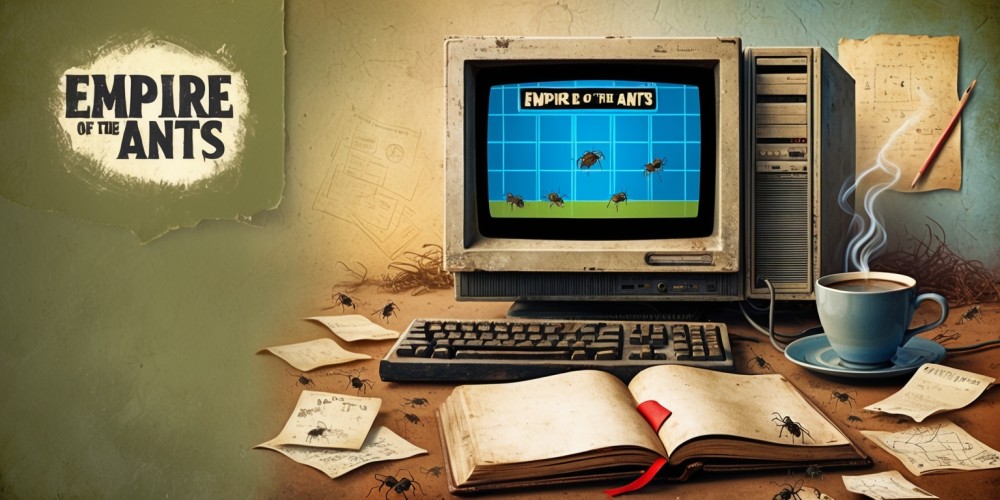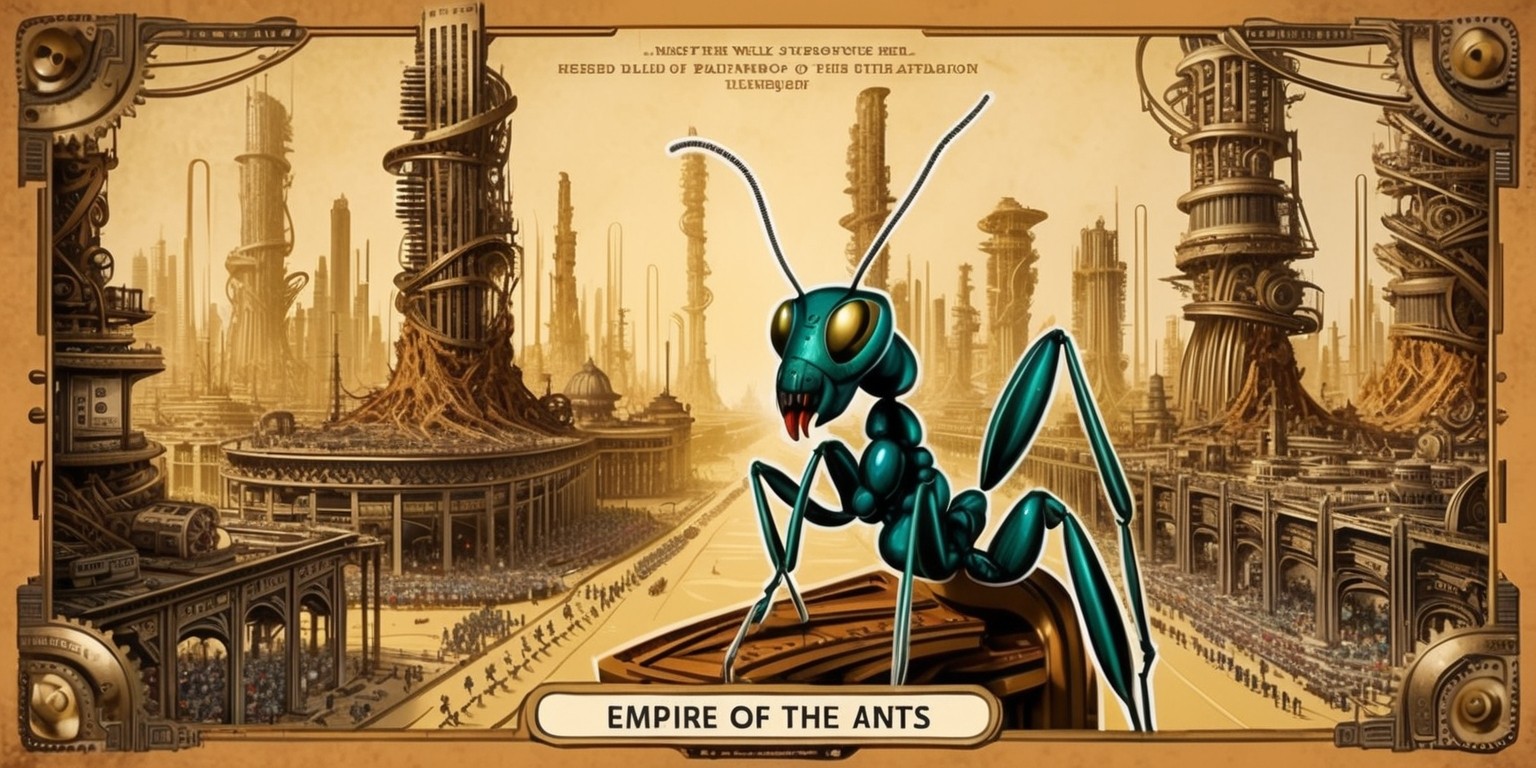Lost Potential: Analyzing the Frustrating Charm of Empire of the Ants' Single-Player Campaign
Nov-11-2024

Set off on an adventure through the enchanting yet frustrating landscape of the single-player campaign in Empire of the Ants—a game that teeters on the edge between charm and mediocrity. Situated in a vibrant world dominated by miniature yet formidable ants, the campaign offers players an opportunity to engage in strategic missions that vary drastically in difficulty and gameplay style. However, beneath the appealing surface lies a disappointing experience full of unfulfilled potential and lackluster design choices.
Mission Overview: An Unbalanced Experience
Spanning around 12 hours, the single-player campaign is a mixed bag of combat and exploration missions. Players will quickly discover that the difficulty spectrum ranges from ineffably easy to exasperatingly hard, often within the same mission. The inconsistent enemy AI serves as a major contributing factor to this imbalance.
Passive AI: A Double-Edged Sword
Although it may appear to be a gift at first, the passive behavior of enemy units leads to a significant lack of engagement. Enemies frequently fail to utilize their abilities effectively, rendering many battles anticlimactic. Yet, this complacency shifts abruptly during certain missions, where players are thrown into overwhelming scenarios requiring near-perfect execution to succeed.
Design Flaw: Mid-Mission Save Limitations
A particularly frustrating aspect of the gameplay is the absence of mid-mission saves. Players are left to replay long segments upon failing critical objectives, which is especially punishing in missions that require defending multiple nests against waves of attackers—all while resource management becomes cumbersome.
Defending the Nests: A Daunting Task

Among the worst offenders is a mission that tasks players with defending seven nests against continuous assaults. Losing control of just one nest leads to instant failure—a design choice that feels unjust and poorly thought out. With waves of enemies attacking from numerous directions, upgrading each nest's defenses becomes a feat of futility.
Combat Missions: A Mixed Bag
Combat-related tasks vary in excitement and execution. While some missions can be moderately engaging, the overwhelmingly simplistic mechanics often detract from the overall experience. Players seldom feel a genuine sense of achievement, as victories are as much a product of flawed enemy tactics as they are of skill.
Stealth Missions: More Frustration than Fun
Scenarios that require stealth feel particularly underdeveloped. Tasks like scanning enemy troops or capturing elusive fireflies often devolve into mindless running around the environment instead of strategic maneuvers. The so-called “stealth” moments largely amount to a lack of meaningful consequences for being detected, leading to repetitive gameplay.
Exploration: A Whimsical Yet Tedious Requirement
Beyond combat, players are also required to embark on tedious bug-hunting missions, where only a single ant is controlled. The search for camouflaged bugs can feel downright exasperating, especially considering the realistic art style that serves to obscure targets rather than enhance gameplay.
The Puzzles of Proximity Sensors
Players are equipped with a non-specific proximity sensor that adds another layer of frustration. Rather than providing clear direction, the sensor merely encourages players to run in circles until they accidentally discover a hidden bug. This mechanic transforms what should be a fun exploration element into a chore.
The Upside-Down Combat Mechanics
While players have the ability to climb and traverse different surfaces, few missions take advantage of this mechanic in engaging ways. The singular mission where units interacted while upside down offered a moment of levity—albeit at the cost of clarity, as fallen foes rained down unexpectedly.
A Missed Opportunity for Scale and Intricacy
Empire of the Ants attempts to showcase its impressive environmental scaling, yet the execution often falls flat. Aside from a few oversized objects that players can interact with, the gameplay rarely capitalizes on its potential for creative design. Traversing oversized toys or other ephemera ultimately lacks the thrill one would expect.
Mission Selection: A Convenient but Flawed Menu
A unique aspect of the campaign allows players to choose missions through interactions with quest-giving characters in hub areas. However, this step does little to alleviate the issues plaguing the gameplay, as most missions lack appeal. Players quickly find themselves wishing they could skip straight to more engaging content.
The Storyline: A Lackluster Narrative Backbone
The underlying narrative fails to captivate as well. With no indication of human characters or compelling subplots based on the source material, the dialogue feels painfully uninspired. Threads involving threats from termites and rival ant factions serve as a backdrop, but unquestionably lack depth and engagement.
The Ant Civil War: An Incomplete Arc
In a curious turn of events, the emergence of an ant civil war offers a glimmer of potential excitement. Sadly, the conflict is resolved as abruptly as it appeared, leaving players puzzled rather than satisfied. This missed opportunity for substance exemplifies the campaign's overarching issue—reduction of dynamic narrative possibilities.
Final Thoughts: Dismal Delivery on a Charming Concept
Ultimately, the single-player campaign of Empire of the Ants presents a lackluster experience that squanders the richness of its premise. Engagement levels fluctuate dramatically, with combat often overshadowed by frustrating mechanics, poorly developed missions, and an uninspiring narrative. Although there are tangible elements of charm within the game, they become overshadowed by the frustrating design choices that dominate the experience.
Conclusion: A Call for Improvement
In its current state, Empire of the Ants’ single-player campaign is more of a chore than a delight. While there are glimpses of intriguing concepts scattered throughout the experience, the overall design leaves much to be desired. If the developers seek to create a truly engaging campaign in the future, substantial improvements will need to address the glaring inadequacies that currently mar an otherwise captivating universe.







